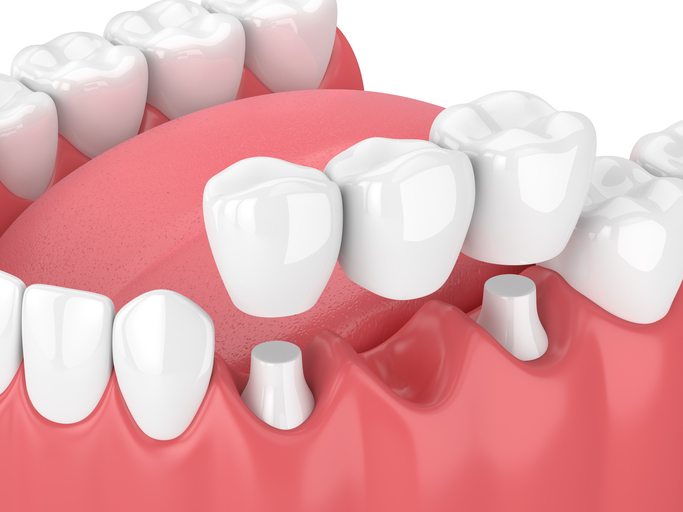Dental Bridges
A missing tooth does not have to be a lost cause! We can fill the gap and restore your old smile.
A missing tooth or teeth can impact the way you eat, speak, look and the alignment of your remaining teeth. You’ve got options to “just living with it.” We can build you a bridge.
A STRONG FOUNDATION
Don’t think of a dental bridge the same way you might a highway bridge that goes over a gap like a river. A dental bridge CLOSES the gap missing teeth cause.
Your teeth are meant to work together like the links in a chain. How effective does a chain with missing links work? A dental bridge acts as your new teeth, re-establishing the missing links in the chain, so that your mouth will work properly. Dental bridges are constructed of ceramic or porcelain fused to a metal foundation. This strong foundation ensures that the bridge will support your mouth’s normal functions. Like smiling!!!
Picture
PROCEDURE
1. Building a dental bridge begins with preparing the natural teeth or abutments. We shape the abutment teeth so that the ends of the bridge will fit comfortably on each one.
2. The next step is to take an impression of the area. It will be sent to our lab where your permanent restoration will be created. We will provide you with a temporary restoration that resembles your natural teeth so that you can continue with your daily life without worrying about a missing or unattractive tooth.
3. During your second visit to our office, we will put your permanent restoration in place. The bridge will be fitted comfortably into your mouth, and we will make every effort to ensure that it feels exactly like your natural teeth.
4. The final step in the process is to cement the bridge into your mouth, leaving you with a beautifully restored smile.
THREE BRIDGE TYPES
Traditional bridges, the most common type, involve creating a crown for the tooth or implant on either side of the missing tooth, with a pontic (artificial tooth) in between. Traditional bridges are made of either porcelain fused to metal or ceramics.
Cantilever bridges are used when there are teeth on only one side of the open space. A typical cantilever bridge consists of three units: two abutment crowns that are positioned side by side on the same side as the missing tooth gap. The pontic is then connected to the two crowns, completely filling the gap.
Maryland bonded bridges(also called resin-bonded bridges) are made of porcelain teeth and gums supported by a metal framework. Metal wings on each side of the bridge are bonded to your existing teeth.
This illustration shows how a traditional dental bridge closes the gap caused by a missing tooth.


